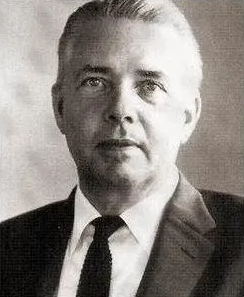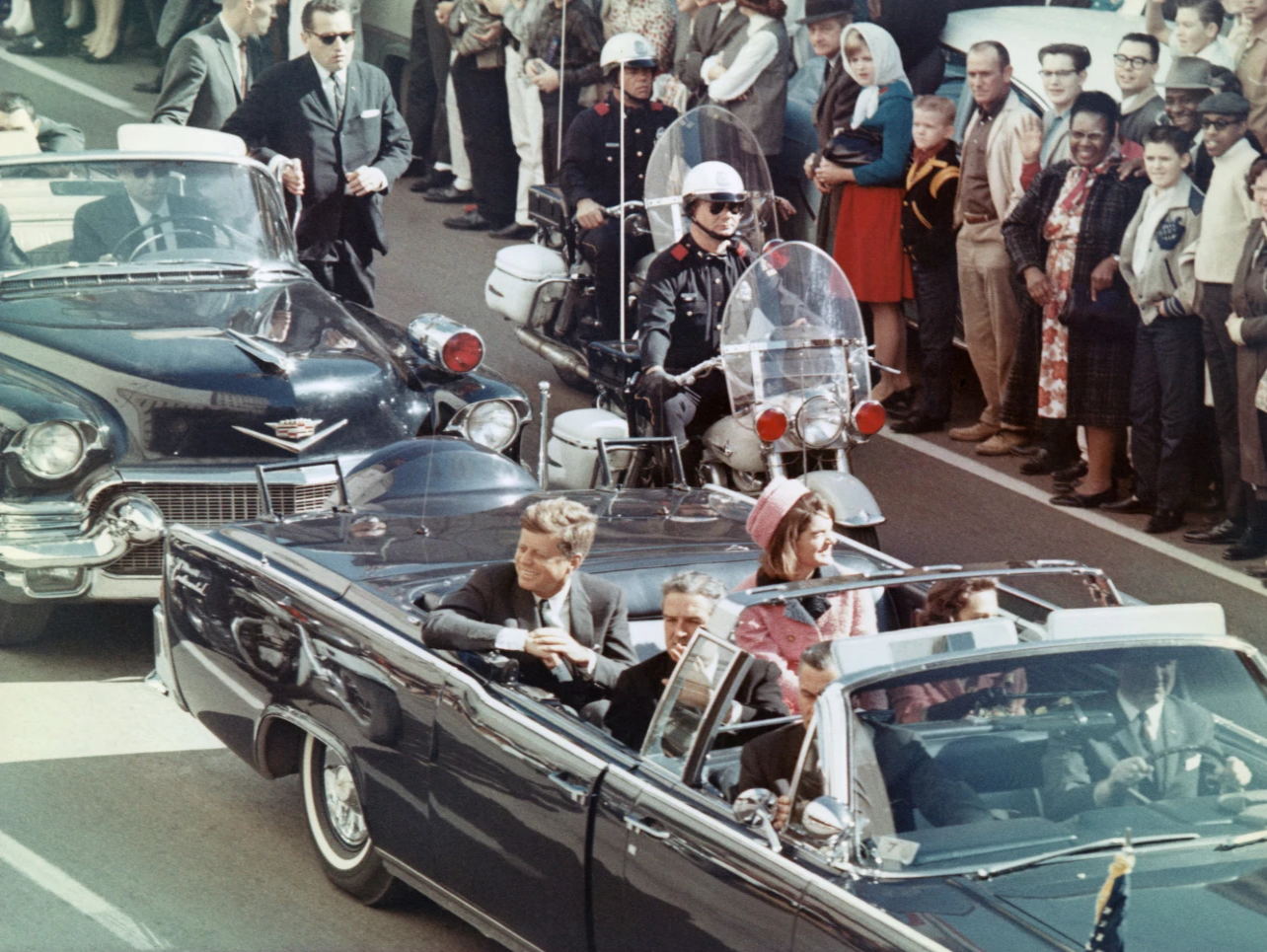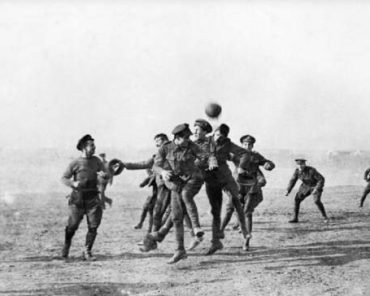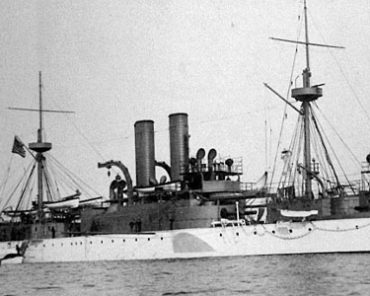THE JFK ASSASSINATION COMPLETE

Por Pedro V Roig, Esq.
PRESIDENT LYNDON JOHNSON AND THE COVER UP
Fifty-nine years ago on November 22, 1963 John F. Kennedy was assassinated in Dallas, Texas. The President was shot twice and slumped over toward First Lady Jackie Kennedy who was sitting by his side in a convertible limousine.. At 1:00 pm Central Standard Time, the President was pronounced dead.

President John Kennedy and First Lady Jackie in Dallas,Texas
At 1:51 pm Lee Harvey Oswald was arrested at the Texas Theater. In the police station Oswald was interrogated by several detectives. He was sitting at a table in a delucional state of satisfaction until he was asked; “Have you ever been to Mexico? “Yes, I’ve been to Tijuana when I was in the Marine Corps”. Then the next question deeply disturbed Oswald “Have you been to Mexico City?”. He was surprised and asked the interrogator.” “How did you know? I-I-I’ve never been there.” [Interview with Jim Hosty, June 22,1993 (Frontline)].
The CIA knew that on September 27,1963 Oswald had arrived in Mexico City and registered in the Hotel del Comercio. He visited the Cuban and Soviet consulates several times in an attempt to secure a visa to Russia via Cuba. Oswald visa requests were denied. At the Cuban consulate Oswald turned violent and began screaming “I am going to kill that bastard! I am going to kill Kennedy”. (Gus Russo and Stephen Molton. “Brothers in Arms”.Bloomsbury, New York, 2008, pp 310). Was the visa denial a calculated disclaimer to distance Oswald from Castro’s Cuba? The Soviet and Cuban intelligence agencies knew that the CIA had active agents, camaras and sophisticated listening devices on both diplomatic buildings.
In his unpublished autobiography Winston Scott, the CIA’s Mexico City Station Chief (1956-1969) wrote: “ Every piece of information concerning Oswald was reported immediately (to Washington) after it was received…. These were made in all his contacts with both the Cuban consulate and the Soviets….Persons watching these embassies photographed Oswald as he entered and left; and clock the time he spent on each visit. (HSCA. House Selected Committee on Assassination.Mexico City Report p125 Winston Scott “Foul Foe”. Unpublished Manuscript, p 273.) Winston ”Winn” Scott was a WWII veteran intelligence officer with excellent operational performance based on training, experience, and good judgement focused on expedient priorities.

While in Mexico City, Scott established a close intelligence collaboration with Mexican President Adolfo Lopez Mateos as well as future Mexican Presidents Gustavo Diaz Ordaz and Luis Hechavarria. (A guide to Winston Scott Papers,1941-1971. 2008.) Scott was kept informed of Oswald’s presence in Mexico City. He wrote: “Lee Harvey Oswald became a person of great interest to us during 27 September to 2 October, 1963 period.” (Warren Commission Report p 777)
On the issue of Kennedy’s assassination, the CIA Director John McCone believed that there was definitely “a Castro connection. (Leo Janos Testimony to the Church Committee, CCIR.October 14,1975. Senate Committee on Intelligence,Box 337). By this time, the spectre of another Cold War confrontation with Russia over Cuba was entering the minds of those aware of Castro’s Ministry of Interior (MININT) agent’s complicity with Lee Harvey Oswald which could provoke a demand from an outraged U.S. nation for the elimination of Cuba’s communist dictator.
In Washington, CIA Director McCone arrived at the home of recently sworn-in President Lyndon Johnson, to brief him on the details of President Kennedy’s assassination and other relevant issues on national security. Johnson had been Kennedy’s principal advocate of legislation in Congress and led Kennedy’s administration in the U.S. Aerospace Program, but Johnson was not aware of other relevant matters, especially John and Robert Kennedy’s plot to kill Castro. McCone informed Johnson that precisely that day, a high ranking CIA’s agent was meeting in Paris with “comandante” Rolando Cubelas Secades, a member of Castro’s inner circle, in another attempt to eliminate Castro. (Brian Latell,”Castro’s Secrets,” eBook,MacMillanCorporate. First published in hardcover in 2012 by Palgrave MacMillanin the U.S. p 45).

“Don’t let it out”
Jonhson, a corpulent bully, alert and master of his political ambitions, immediately called his trusted friend and powerful Democrat Senator Richard Russell and asked his advice on how to deal with Cuba’s connection with Lee Harvey Oswald. His response was given in four words: “Don’t let it out”.(Russo and Molton, op-cit, pp 367). From that moment, disinformation on Castro’s connection to JFK’s crime became the gospel of President Johnson’s cover up.

PRESIDENT JOHNSON AND THE COVER UP OF CUBA’S CONNECTION
Lyndon Johnson was a brilliant, aggressive and deceiving individual with an insatiable craving for political power, smoking, drinks, women and great food. He was loved and admired as well as feared and despised by those around him. He had a compulsion to achieve a major role in history, but could not overcome the devastating feeling of being a shadow of JFK and Jackie’s Camelot. Never before, or after, has the White House experienced the public perception of an elegant, aristocratic and beautiful leadership like the one during the Kennedy years.
In Mexico City where Oswald, a self-proclaimed Marxist, spent six days in contact with Cuban and Russian intelligence agents, the destruction of incriminating evidence began within hours of JFK’s assassination. The evidence simply disappeared from Mexico’s secret files of Winn Scott, CIA Station Chief and Ambassador Thomas Mann. President Johnson did not hesitate to order the destruction of all possible connections of Cuba’s agents with Lee Harvey Oswald, including the several visits of the assassin to the Cuban and Russian consular offices in Mexico City. President Johnson feared that the mounting connection of the Cuban and Russian agents with Oswald while in Mexico City could lead the U.S. to a major confrontation with the Soviet Union.
In the tragic day of JFK’s murder (November 22 1963), the CIA recorded a 2:00 pm telephone conversation between Luisa Calderon, a Cuban agent that met on several occasion with Oswald in the consulate, cheerful talking with a colleague: “Luisa, Kennedy has been killed, assassinated in Texas”, “Really when?” “At one o’clock”. “Fantastic! Wonderful.” Luisa laughed, and the caller said, “Apparently his wife and brother were also wounded”. Their laughter overwhelms them for a moment and Luisa comments, “What good news!” she then asked for the consequences, “only good ones,” Luisa could bearly control her emotions. “He was a family man, yes, but also a degenerate aggressor, three shots in the face, perfect.” (CIA intercept transcript, November 22,1963).
Immediately Luisa dials a number on her phone. An embassy colleague named Nico picks up. They too have a laugh at Kennedy’s expense, and then Nico asks Luisa Calderon “Okay. What time will the plane arrive? -At four, and four-thirty they must be at the airport.” she answers [Russo and Molton op cit p 353 ]. The arriving plane mentioned brought Fabian Escalante, from Dallas to Cuba via Mexico City. (Notes of conversation between Marty Underwood and CIA’s Win Scott,Mexico City, Mexico, March 1968, p.3 paragraph 3). Fabian Escalante is a Major General in Cuba’s Ministry of the Interior,(MININT).

Do Not Implicate Cuba
What happened to the CIA files about Oswald’s visits to the Cuban Consulate in Mexico City? Why was it marginally mentioned in the Warren Commission Assassination Report? Thomas Mann has the answer. The U.S. Ambassador to Mexico (April 18, 1961–December 22, 1963) stated to the House investigating officers, that he was ordered a few days after Oswald murdered President Kennedy to eliminate any investigation that would implicate Cuba’s involvement in the assassination.
It is a historical fact that Oswald was in Mexico City for several days to obtain a visa to Russia via Cuba and also met socially with diplomatic agents, specifically with the 25 years old Marxist Secretary of the Cuban consul, Silvia Duran. (Russo-Molton,op cit p 279). Ambassador Mann believed that a plot to kill President Kennedy had been hatched on Mexican soil, but President Jonhson, driven by his fear of a second Cuban Crisis with the Soviet Union ordered John McCone and Dean Rusk, a pathetic parody of Britain Prime Minister Naville Chamberlain, to shut down the CIA and U.S. Embassy’s ongoing investigations that could have implicated Castro’s agents that dealt with Oswald in Mexico City.

to cancel the JFK investigation.
Actually, President Johnson sent Laurence Keenan to Mexico City to shut down evidence of Cuba’s connection with Lee Harvey Oswald. Ambassador Thomas Mann writes: ”I received this instruction to drop the investigation…It was the only time in my career that I was ever told to stop investigating.”(Russo and Molton,op cit p 380 )
In Mexico City where Oswald, a self-proclaimed Marxist, spent six days in contact with Cuban and Russian intelligence agents, the destruction of incriminating evidence began within hours of JFK’s assassination. The evidence simply disappeared from Mexico’s secret files of Winn Scott, CIA Station Chief and Ambassador Thomas Mann. President Johnson did not hesitate to order the destruction of most of the possible connections of Cuba’s agents with Lee Harvey Oswald, including the several visits of the assassin to the Cuban and Russian consular offices in Mexico City. President Johnson feared that the mounting connection of the Cuban and Russian agents with Oswald while in Mexico City could lead the U.S. to a major confrontation with the Soviet Union.
With the largest operational personnel and state-of-the-art listening equipment in Latin America, the extraordinary capability of the CIA station in Mexico City was designed to know everything about the Cuban and Soviet Embassies. Its operation ensured that every phone line was tapped, and every visitor photographed. Precisely that level of spying sophistication could have disrupted President Johnson’s urgency to cover up the Cuban connection. Therefore, CIA’s Winn Scott and Ambassador Thomas Mann’s ongoing investigations on Oswald’s six days of activities in Mexico City were ordered to be cancelled.
The Warren Investigation Commission
President Johnson was deeply concerned with information regarding alarming and threatening remarks made by Fidel Castro against JFK; and the mounting evidence of Cuba’s Minint officers’connection in the assassination. The profound dislike between Castro and the Kennedys was mutual. On September 8, 1963, ten weeks before Lee Harvey Oswald murdered President Kennedy in Dallas, Fidel Castro spoke at a reception in the Brazilian Embassy in Havana. He raised his voice and said: “The United States’ leaders must realize that if they assist in the terrorist plans to eliminate Cuban leaders, they themselves will be in danger.” [Haynes Johnson, “The Bay of Pigs” New York: Norton Company, 1964] p. 354
Seven days after JFK was murdered, President Johnson decided to create a commission to investigate the assassination headed by a prominent jurist that was trusted by the American people. The choice was Earl Warren, the 14th Chief Justice of the United States Supreme Court who had been appointed to the Supreme Court by President Dwight Eisenhower in1953.

At first, Warren turned down the offer but President Johnson insisted and invited him to meet personally at the White House. The President expressed his fear that evidence of Cuba’s involvement in the assassination could lead to a nuclear war with the Soviet Union. (Robert Jackson and Ronald Ostrow, “Los Angeles Times” September 23, 1993). That could become a major human catastrophe. Warren was emotionally impacted and finally the Chief Justice accepted to lead the investigation that became known as the Warren Commission. President Johnson felt in control. From November 29, 1963 to September 24 1964, the commission investigated the JFK murder.
The Commission held hearings and took testimonies of 552 witnesses.The seven days of Oswald’s presence in Mexico and his close relationship with Cuba’s MININT and KGB Agents were superficially mentioned. The fear of a nuclear war was an overwhelming incentive for the incongruent report. Warren committed the sin of factual omissions. This investigation’s failure facilitated the KGB and Cuba’s excellent operational expertise to manipulate disinformation data for the myriad of conspiracy theories.
KGB Division General Nikolai Leonov, a friend of general Raul Castro and “Che“ Guevara, headed the KGB in Mexico. He wrote in his memoirs “Hard Times” that he met Oswald in the Soviet Embassy. He was seeking a visa to Russia via Cuba. Oswald was received in the reception room where, according to Leonov, there was a fully loaded revolver on top of a table. A rough approach to an individual seeking a visa. Oswald was informed that the visa would take several months. He was upset but left quietly. (Nikolai Leonov “Hard Times” p 94-95).

at the Soviet embassy
Oswald also met with Valery V. Kostikov, a 30 years old KGB officer, assigned in September 19,1961 to the Soviet Embassy in Mexico City. He has been in Cuba from January 6 to March 7,1961.The CIA believed that Kostikov was an expert in “wet operations” or target assassination. ( John Barron,” KGB Today. The Hidden Hand”,New York:Reader Digest Press, 1983, p 307).
In an excelent analysis of JFK assassination, the Harvard trained clinical psychologist Jose Ignacio Lazaga, a highly regarded head of Havana’s Villanueva University Department of Psychology stated a comprehensive perspective of Oswald’s criminal motive. Lazaga believed that Fidel Castro’s war at minimum, the “Intellectual author” of the crime, who “knowing that Oswald had conceived the idea of killing the President, gave his plan the necessary push that would make it a reality, by approving the idea and offering to protect him after the crime had been perpetrated.” [Russo and Molton op cit p. 385] this accurate perspective provided the essential need to have Minint officer Fabian Escalante in Dallas, to provide Oswald with the psychological support for his criminal action and a possible way out to a safe sanctuary in a heroic role.
Robert Kennedy, concerned with his brother’s historical legacy.
The death of his dear brother JFK was for Robert a lacerating grief that remained forever present in his short life. (He was shot and killed on June 5, 1968 by a Palestinian fanatic. He was 42 years old).
For Robert Kennedy, the murder of his brother John had a clear and convincing evidence of Castro’s agents connection with Lee Harvey Oswald. This was the ultimate shame and a degrading humiliation. Kennedy’s irresistible impulse to avenge the Bay of Pigs disaster by eliminating Cuba’s dictator turned around with a vengeance.

At this stage of his life it was obvious that JFK was destitute of the tenacity, analytical concentration and strategic vision needed in a courageous leadership. From the fatal shot in Dallas, death and sorrow became the companion of Robert. He suffered immensely and felt the urgency to cover up their obsessive drive to kill Fidel Castro. The historical accomplishment of his dear brother had to be a shining legacy of Human Rights, Individual Freedoms and the Rule of law in the majestic perception of an idealized Camelot. A most difficult task.
The cover up of a huge clandestine operation.
Committed to getting rid of Fidel Castro, JFK placed his brother Robert, the Attorney General, in charge of the clandestine operation, led by Manuel Artime, a charismatic Cuban exile leader and Bay of Pigs veteran.
In January 1963, Robert Kennedy met with Artime at his Hickory Hill Estate in Virginia to implement the clandestine operations against the communist regime. Priority one was the execution of Fidel Castro. Over two thousand young Cubans fought from bases in Santo Domingo, Costa Rica and the Florida Keys with extraordinary courage and patriotism. [ Graystone Lynch, decision for disaster “Potomacbook 2000, p.480]
By 1961, Rolando Cubela, the emotionally unstable leader of the Directorio Revolucionario, (DR) and later a guerrilla fighter in the Escambray Mountains, where he fought side by side with “Che” Guevara portrayed himself as betrayed by Castro’s communist revolution. On August 2, 1962 Cubela established a link with the CIA. It was through his friend Carlos Tepedino, an active CIA operator.

At this time Cubela was perceived as the most valuable asset of the agency to get rid of Castro. On September 5, 1963, the CIA officer Nestor Sanchez met with Cubelas in Porto Alegre, Brazil, and at the end of the meeting, Cubela requested another meeting with a high-level official of Kennedy’s administration. (Brian Lattel, “Castro’s secrets” eBook, McMillen corporate, 2012 p. 473) Cubela’s cryptonym at CIA was AM/Lash. [bid p. 451]
Fully engaged in the clandestine operation, Robert Kennedy ordered Desmond FitzGerald, Chief of the Cuban Task Force and in charge of AM/Lash to arrange a meeting with Cubela in Paris. This was a controversial meeting. Some high-ranking CIA officials did not trust Cubela as an enemy of Fidel Castro. Was Cubela a double Agent?

It was an overcast day in Paris. On October 22, 1963, Cubela met with Des FitzGerald and was presented with the famous “poison pen” device provided by the CIA’s Technical Service Division. The instrument was a Paper Mate ballpoint pen with a fine syringe that could deliver the poison to Castro. Cubela rejected the syringe plan.
A month later, on the fateful day of November 22, 1963, Cubela and Tepedino met in Paris with CIA officer Nestor Sanchez, a ten year veteran of the agency. Sanchez informed Cubela that the CIA was ready to provide his requested rifle with a telescope and a silencer. Cubela had a house in Varadero Beach near one of Fidel’s houses, which was the perfect place for the killing shot.
It is at this moment that the hand of destiny took over. During the Cubela’s meeting in Paris the telephone rang, it was an emergency, Sanchez listened to the brief message from Washington. He seemed to be bewildered, caught in a long peinfull moment. Then he mentioned the terrible message.. ” President Kennedy had just been shot! [Russo and Molton, op cit p 13] The men were in shock, stood up in silence , put on their coats and left.

The second cover up was on. Suddenly the top executives of Kennedy’s administration suffered a loss of memory. On the multiple investigations of the JFK crime, they could not remember the several details of the huge clandestine activities led by Robert Kennedy. It was an active CIA operation up to the day of the President’s crime and the meeting with Cubela that took place that same day in Paris.
In 2005, Oscar Marino, an intelligence Cuban defector, detailed what he knew of Oswald’s visit to the Cuban diplomatic mission in Mexico City. Marino stated that “Oswald volunteered to kill Kennedy and that Cuban diplomats in Mexico City had advanced knowledge of Oswald’s assassination plan.” “He adopted our plans as his own- his idea was a natural project of our wish. He was an instrument of the G2 (Cuban Intelligence). It makes no difference whether he volunteered or was used. It all ended up the same.”(Russo and Molton,op cit p 405)
As soon as John F. Kennedy was murdered, Fidel Castro began a disinformation campaign, implicating the Mafia who owned gambling casinos in pre-Castro Cuba, the teamster Union (Hoffa), and Cuban exiles. Castro claimed that he knew nothing of Oswald’s existence before the Dallas assassination and that he was never informed on Oswald’s threatening remarks against Kennedy in the Cuban Consulate in Mexico City. These outrageous lies were part of a premeditated deniability perfidy.
Fidel Castro Got Kennedy First
In an extraordinary revelation, former President Lyndon Johnson, with access to top secret information, stated what he knew from the beginning of the investigation and his cover up order that Castro was involved in John F. Kennedy’s assassination. In a TV interview with Howard K. Smith, President Johnson stated: “Well, Kennedy tried to get Fidel Castro, but Fidel Castro got Kennedy first. (Georgiie Ann Geyer,”Guerrilla Prince,” Little Brown and Company,Boston,1991. p299)
This series of articles about the invasion of the Bay of Pigs, the missile crisis and the murder of JFK are part of a future work that will be published as a book about those decisive years for the history of the United States, Cuba and the world.



